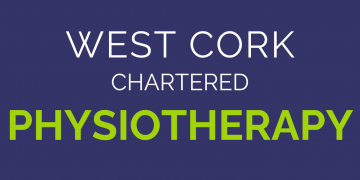FITNESS TIPS FOR PARENTS AND CHILDREN
Recent Government statistics reveal that about 60% of our nation’s children are overweight, making childhood obesity a national epidemic. Chartered Physiotherapists say that parents can help their children avoid the obesity trap by making sure that children fit physical activity into each day.
Limit television, video games and computer time. Remember that television commercials encourage children to crave the food they see.
When your child watches television, encourage him or her to do some exercises during the commercials such as sit ups or push ups.
Plan week-end family activities involving exercise, such as walking or bicycling
Help your child plan group activities for friends such as football or swimming
Remember that your family does not need to join a Health Club, or buy fancy equipment to be more active. Walking is inexpensive and easy.
Provide positive rewards for your child for engaging in physical activities such as workout clothes, a new football or an evening of bowling.
Be your child’s “exercise buddy”. Plan daily walks for bike rides and set goals together for increasing physical activity. Do not set goals for losing weight.
As you schedule your child’s extra curricular activities, remember to plan time for physical activity. Physical activity should not be “squeezed” in.
BACK CARE TIPS
- DON'T bend at the waist to lift objects from floor
- DON'T sit or stand for a long period of time
- DON'T sleep on very soft beds or sit on soft chairs
- DON'T reach too high lifting objects above head – use a stool and reach at shoulder height or below
- DON'T sit on chairs if your feet cannot reach the floor – use a lower chair
- Whenever possible support your back by sitting with a soft pillow at your lower back
- Try using a stool for your feet if your back gets sore and tired while sitting
- Rest your back when it is tired by lying down with a pillow at back of knees
- Proper sleep position is on side with pillow between knees
TIPS FOR CORRECT SPORT SHOES – IF THE SHOE FITS...
One of the most important steps you can take for walking or running is to wear the right shoes for comfort and stability.
- The Insole should match the arch of your foot
- The heel should provide significant shock absorption
- The sole should have significant cushioning/shock absorption and the shoe should bend at the FOREFOOT RATHER THAN THE MIDFOOT
- The toebox should provide plenty of wiggle room for the toes in both depth and width
- The heel grip should hold the heel snugly in place. A padded cuff at the top opening may prevent a firmer grip and cause friction on the skin.
6 STEPS FOR PERFECT POSTURE
- Concentrate on the way you sit
- Adjust your work station to suit your body
- Keep your spine in line when you are in bed
- Kick off your shoes as soon as you walk in the door
- Think about how you stand
6 PRINCIPLES OF FLEXIBILITY
- Choose several stretches to allow flexibility of all major muscle groups
- Gradually increase the force of your stretch until slightly beyond the comfort point but only a mild tension not taking it to the point of pain
- Hold your stretch for 15 – 30 seconds. Ease off and repeat
- Do not bounce or stretch rapidly
- Static stretch is best following a general warm-up movement such as running
- Incorporate the static stretch into your cool-down programme
A PROPER WARM-UP
A warm-up consists of activities like jogging or any activity involving all major muscle groups for a 10 to 15 minute period. The warm-up serves to prepare the body for the stresses of exercise. It causes an increase in the temperature of the muscles, helps to prevent strain, sprains and other soft tissue injury as well as prepare the circulatory and respiratory systems for action.
A PROPER WARM-DOWN
A proper warm-down or cool-down is as important as the warm-up. It refers to the continuation of exercise at a low intensity for 15 to 30 minutes following a normal work-out. The cool-down consists of activities similar to those of the warm-up. Walking is a good example of an activity that can be used to gradually increase intensity level. A continuation of exercise at a low intensity, as well as post—activity stretching help to reduce the amount of muscle soreness often experienced the day after a work-out.
TOP 10 WAYS TO MONITOR YOUR WORK-STATION HEALTH
- Keep feet on ground
- Sit up straight
- Eyes level with screen
- Forearms parallel
- Shoulder blades settled
- Correct mouse positioning
- Rest the eyes frequently
- Take a break at least every 20 to 30 minutes
- Stretch and move Head, Shoulders and Feet
- Watch for problems – headaches, fatigue, muscle pain or cramping

